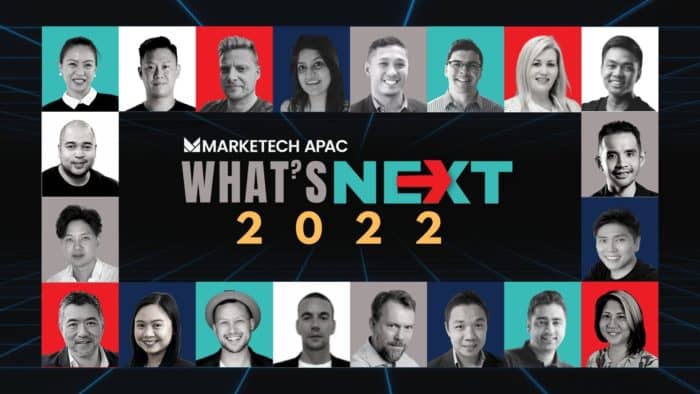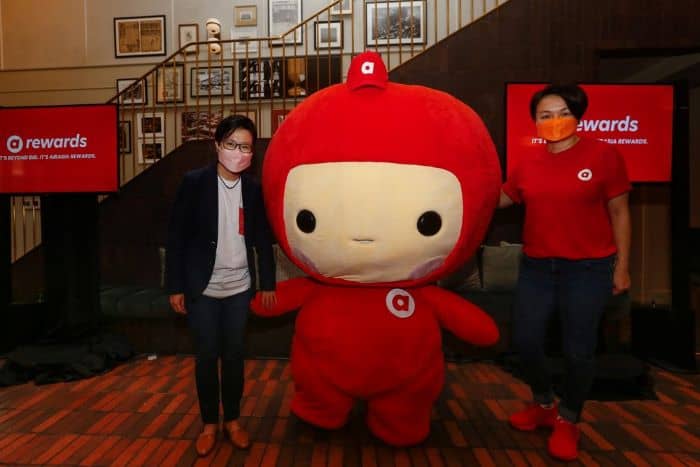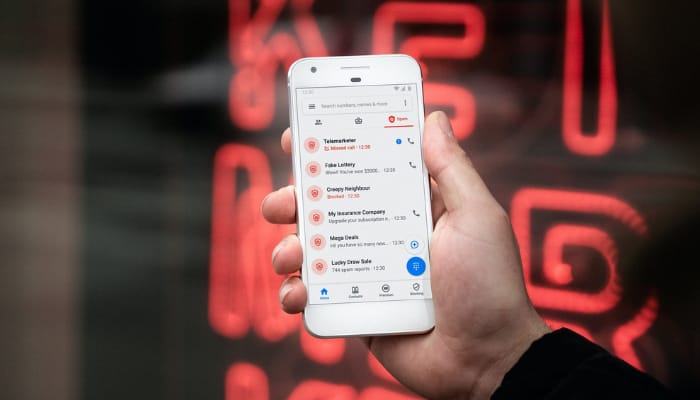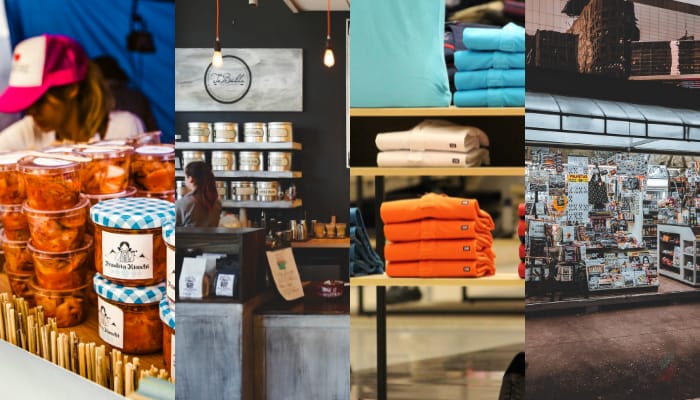Over the past two years, the pandemic has transformed the consumer, the brand, and the advertiser. The absence of physical interactions created a ripple of massive changes that have either brought sectors down to their knees, or proved to be a boon for others.
If anything, the upcoming year is presenting a better promise for business as social restrictions further ease down and travel reopens. But despite this remains the challenge of unearthing and uncovering who the consumer will be – What will please him and what will fall off his radar?
MARKETECH APAC, the digital media who itself was born in the mid of the pandemic, aims to take the intimidation off the new year and instead help marketers focus on the potentials for innovation through the thought leadership series, ‘What’s NEXT’.
What’s NEXT is a collection of expert insights by marketing leaders which aims to present predictions and insights on forecasted trends in 2022 and help future-proof brands’ strategies coming into the new year.
“As a watchdog and a dedicated content hub for the industry, we know how fluid trends in this part of the world could be. Metaphorically speaking, we want to hold marketers’ hands and be with them as we step into a new chapter in this global situation, and see how the pandemic – now endemic – will change the way brands and consumers interact with each other,” said Shaina Teope, regional editor of MARKETECH APAC.
The series which ran from December 2021 to February 2022 gathered marketing leaders coming from different domains to present ideas on how to stay ahead of the marketing game this 2022.
Check out the full line-up of insights by marketing leaders under the series:
What’s NEXT: The top personalization strategy for the increasingly nuanced consumer
- In the recent webinar by MARKETECH APAC on the future of digital marketing in the Philippines, AirAsia PH’s Head of Marketing Allenie Caccam; Anvey Factora, the head of marketing communications, e-commerce, and retail at Canon Philippines; and Mark De Joya, chief operating officer of Max’s Restaurant – all agreed on one personalization strategy that would remain constant in relevance no matter what the changes the new year will bring to the market and the consumer.
What’s NEXT: Why marketers need DXP more than ever in 2022
- It’s now no question that any platform or tech that help push brands’ digitization further is worth being the centerpiece of brands’ marketing strategies. Don Lee, the managing director of CMS provider Magnolia for APAC dug a little deeper on how DXP, specifically a composable DXP, can best help brands not just adapt to the changes in the consumer today, but how such type of platform can
What’s NEXT: Moving beyond static ads by leveraging programmatic creative management platforms
- Travis Teo, executive director of adtech adzymic, shared the different possible hindrances that are keeping brands from providing optimum digital creatives – and deep dived on the root cause of all of them.
What’s NEXT: Predictions for customer experience in 2022
- In this read, Shellie Vornhagen the CXO at CX platform Emplifi, enumerates the ways CX is going to transform itself as newer trends firm up in the market in 2022, such as social commerce, conversational chatbots, and most especially, metaverse.
What’s NEXT: How can platform businesses supercharge their loyalty programs in 2022
- In the pilot article under the series, we roped in Loyalty & Growth Leader Henry Christian to talk about how on-demand businesses, which has surged in need among consumers during the pandemic, can leverage their present demand to deliver highly-retaining and -converting loyalty programs.
What’s NEXT: Guide to help you master the art of content marketing in 2022
- Who better to share insights on forming the best content marketing strategy coming into 2022 than a marketing leader from leading Asian news publication South China Morning Post. Its Regional Sales Director for APAC Darryl Choo shared how brands can refresh their content marketing strategies, imparting helpful insights on how to successfully work from internal process to delivery.
What’s NEXT: How mobile is redefining shopping experiences
- We have become mobile-first even before the pandemic struck, but with stronger demand for fast and on-demand shopping experiences by the consumer, the mobile platform is now opening up more greenfield opportunities for brands to explore and innovate. Check out the thought leadership piece by Karam Malhotra, global VP at SHAREit Group.
What’s NEXT: What the future looks for marketers beyond the cookie
- When Google earlier announced that it will be phasing out cookies by 2022, the advertising community was brought to a standstill, suddenly overcome by the urgency to re-calibrate ad targeting strategies Then the community had some kind of dejavu when this was further delayed to 2023, providing a breather but at the same time asking of brands and advertisers to do better in their preparations. Let this insight on cookies by Cheetah Digital’s Billy Loizou, further add to your cognizance on dealing with a cookieless digital environment as there is no such thing as overpreparation.
What’s NEXT: Why brands must focus more on customer retention than acquisition this 2022
- David Harling, the managing director of MoneySmart, touches base on the state of growth marketing now that we are about to navigate a digital world without cookies. His top piece of advice – brands may want to lessen dependence on acquisition as this will start to cost more in the efforts to scale.
What’s NEXT: How businesses and brands can thrive in metaverse
- Metaverse is now taking the digital world by storm, and marketers are at a great position to leverage this platform to turbocharge brand engagement – but how does one start? Cheelip Ong, Lion & Lion’s regional chief creative officer, shared how metaverse can be the implementation ground for other emerging trends in marketing such as NFTs and gamification
What’s NEXT: Unpacking opportunities in digital finance for 2022
- Of course with the surge in digital activity this pandemic tags along the supercharged growth of digital finance. Superapps in SEA is leading the way with financial services, becoming the anchor by which consumers can have a brand as top-of-mind across all services. UM APAC’s Elizabeth Shie and Abygayle Brani share the ways fintech marketers can leverage its growth this 2022.
What’s NEXT: Why brands must adopt a multi-platform strategy for social advertising
- According to Stewart Hunter, the director of Smartly.io for customer success in APAC, each social media platform has grown to serve a different role in the funnel, posing a challenge to the brand message and format in various platforms. Hunter shares why brands must start adopting a multi-platform strategy for their social advertising and where to begin in their efforts.
What’s NEXT: Top tips for CRO this 2022
- Whether you’re an online retailer, a startup with a valuable B2B product, or an entrepreneur selling your expertise, CRO could be the key to a bigger profit margin in 2022. Charlotte Ward, the director of Agnes media, shares her top three pieces of advice in achieving greater conversions.
What’s NEXT: Shoppable Content: The convergence of content and commerce
- In narrowing the gap between commerce and consumer, big brands are moving from a publisher model into an e-commerce one. Sven Lung, CEO of Green Park Content, takes a look at some of the best case studies of previously launched shoppable content initiatives and shares how brands can successfully deliver said efforts on their own.
What’s NEXT: What to expect in influencer marketing in 2022
- What’s the next phase of influencer marketing? We’ve seen the power of influencers in brands’ marketing in the past period, and now, we need to prepare for what’s to come next in this area. Ace Gapuz, CEO of Blogapalooza, shares what she believes the 5 forces that will drive influencer marketing forward – including the phenomenon that will start streating content creators as individual media companies.
What’s NEXT: How brands can connect with Asia’s next generation of culture shapers
- How has the pandemic changed the youth? In this insight, Lesley John, the MD of Virtue for APAC, shares the consumption and lifestyle changes that have occured among Gen Zs and Millennials in the past two years, and shares how brands can get under the skin of this cohort moving forward in the pandemic.
What’s NEXT: How BNPL can be a merchant enabler for retailers in Asia
- BNPL services have increased in adoption in the past year with the pandemic seeing a surge of consumers jumping into digital consumption. Moving forward in 2022, Jeremy Wong, head of strategic partnerships at Atome, shares the ways BNPL is expected to evolve, and what retailers can do to leverage its power in enabling sales among merchants.
What’s NEXT: 2022 will see the evolution of corporate purpose
- As consumers become more conscious about their impact to society, they have grown to demand more accountability from the brands they consume. Mel Panabi, business director of Red Havas Philippines, shares on what has become of this new resolve and how brands must act in accordance to this new value-laden consumer behavior.
What’s NEXT: Welcome the age of reimagination
- Virtual events are here to stay, and it’s time we step up these online interactions beyond standard online meetings and gatherings into something more powerful. According to Cathy Song Novelli, SVP for marketing and communications at Hubilo, it’s about creating a supportive ecosystem to enable innovation among event marketers.
What’s NEXT: How the ride-hailing industry shifted gears to meet market demand
- Ride-hailing services is no longer a luxury and the pandemic has further pushed for its value with the recurring limitations on social interaction. Ryde’s CEO Terence Zou and PR Lead Katrina Adrianne takes a look at this transformation over the past two years and shares what we can expect from the industry as we move forward in 2022.
What’s NEXT: The state of dine-in, food aggregators moving forward in 2022
- When food aggregators cushioned the downward growth of dine-in during Covid, it has gradually stepped up from being an afterthought to becoming F&B players’ top business model. KFC Malaysia’s CMO May Ling Chan reviews the current opportunities and challenges as brands further strengthen their strategies on food aggregators.
What’s NEXT: The future of CTV measurement and transparency
- Connected TV (CTV) and over-the-top (OTT) has overtaken the linear TV experience over the past two years. Laura Quigley, SVP for APAC at IAS, talks about what has been these changes in media consumption and the opportunities that lie for advertisers and publishers in programmatic technology.
If you are a marketing leader and would like to share your insights and predictions under the series, email us at [email protected].





